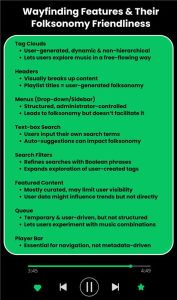When we talk about recommender systems in machine learning, we often think of how
Amazon suggests books or how Spotify queues up your next favorite song. Most of these
examples of recommendation systems fall under the Business-to-Customer (B2C)
umbrella. However, there’s a growing need to shift our focus towards recommender
systems in e-commerce settings that are B2B-oriented — where the value of
personalization and predictive analytics can significantly impact strategic decisions.
Why Recommender Systems Matter in B2B
In a B2B context, the stakes are higher and the relationships are long-term. A well-designed
recommender system can not only assist buyers in discovering relevant products or
services but can also help sellers better understand client preferences, behavior patterns,
and market needs. The result is smarter procurement, more personalized offers, and data
driven negotiation on contracts, payment terms, and service levels.
Yet, B2B customer satisfaction is often lower than in B2C markets, pointing to a clear gap in
how enterprises understand and respond to client needs. This is where intelligent
recommender system algorithms can offer a game-changing advantage.
Common Types of Recommender Systems
Understanding how different recommendation systems work is crucial. The current
generation of machine learning-powered recommender systems typically falls into four
categories:
1. Collaborative filtering
Based on the idea that similar users will enjoy similar items. This is ideal for
discovering products based on user similarity but requires a large volume of
interaction data.
2. Content-based filtering
Matches user profiles to the characteristics of items, making it useful in domains
where item metadata is rich and structured.
3. Knowledge-based systems
Depend on domain-specific knowledge, making them perfect for high-stakes B2B
decisions like purchasing machinery, software, or even financial services, where
data is sparse but decisions are critical.
4. Hybrid systems
Combine two or more techniques to deliver more robust recommendations.
These methods, when deployed thoughtfully, can unlock new insights for B2B enterprises.
For example, a seller can identify patterns in client purchases and suggest new services,
while buyers can streamline vendor discovery using predictive suggestions.
Real-World Application: Recommender Systems in Fintech
One compelling space for the B2B application of recommender systems is financial
technology. Fintech platforms often handle large-scale interactions between businesses,
from lending services to digital wallets and payment processing. Implementing intelligent
recommendation systems can enhance partner onboarding, provide dynamic credit
scoring, or tailor financial products based on transaction behavior.
If you’re curious about how predictive analytics and intelligent systems can drive business
value in fintech, check out our fintech software testing services to learn how we ensure
accuracy and scalability in such high-stakes environments.
How Recommender Systems Learn in B2B Contexts
Advanced recommender systems don’t just rely on historical purchase data. They often
integrate with back-end systems like CRM platforms, transaction logs, and even sentiment
analysis from customer feedback. This integration enables them to generate intelligent
suggestions, like identifying which products should be bundled or which customer is at risk
of churn.
A particularly innovative approach involves action rule mining, where algorithms learn what
actions can convert a low-value client into a high-value one. Originally tested in large-scale
banking databases, this approach can now be seen powering strategic sales and marketing
decisions across industries.
The Future: Recommender Systems as Strategy Partners
More than just a sales tool, recommendation engines in B2B markets have the potential to
serve as strategic advisors. By aligning buyer needs with seller capabilities, they can:
• Automate repetitive decision-making
• Surface untapped business opportunities
• Improve customer satisfaction and retention
• Strengthen long-term partnerships
And as machine learning models evolve, expect these systems to deliver increasingly
nuanced and explainable outputs, making it easier for users to trust and act on
recommendations.
Final Thoughts
While most of the popular recommendation systems examples today revolve around B2C
platforms, the B2B landscape is ripe for transformation. Recommender systems in e
commerce, especially in sectors like fintech, can enable smarter, faster, and more
personalized business decisions.
To explore how our software testing expertise supports complex recommendation models
in financial systems, visit our fintech testing page.
Recommendation Engines in QSR: Serving Personalization at Scale
In an industry where seconds matter and preferences shift in real time, recommendation
engines are reshaping how QSRs drive customer loyalty and sales. Whether it’s suggesting
a spicy burger combo to a heat-loving regular or surfacing vegetarian options during peak
dinner hours, recommenders help brands stay contextually relevant—without missing a
beat.
By analyzing behavioral signals, location, time of day, and purchase history, these engines
don’t just predict what customers might like—they shape how QSRs serve smarter, faster,
and better. The result? More conversions, reduced decision fatigue, and a more intuitive
ordering experience.
But here’s the real question: Are your digital channels ready to deliver that level of
precision?
Explore how our QSR software testing services help ensure that every recommendation,
menu logic, and backend integration works exactly as intended—across platforms,
devices, and user journeys.








